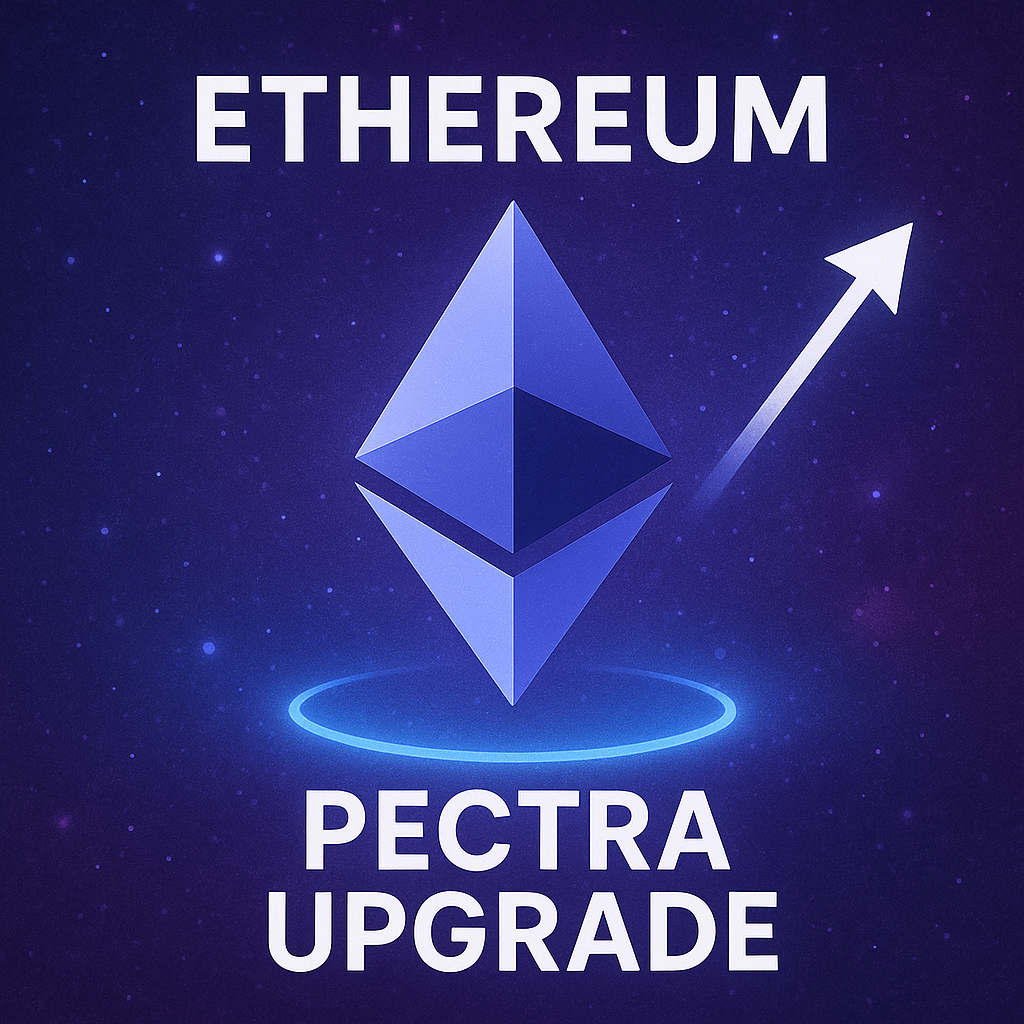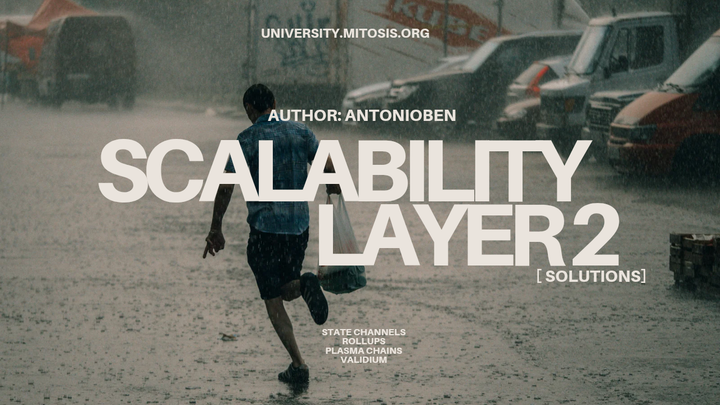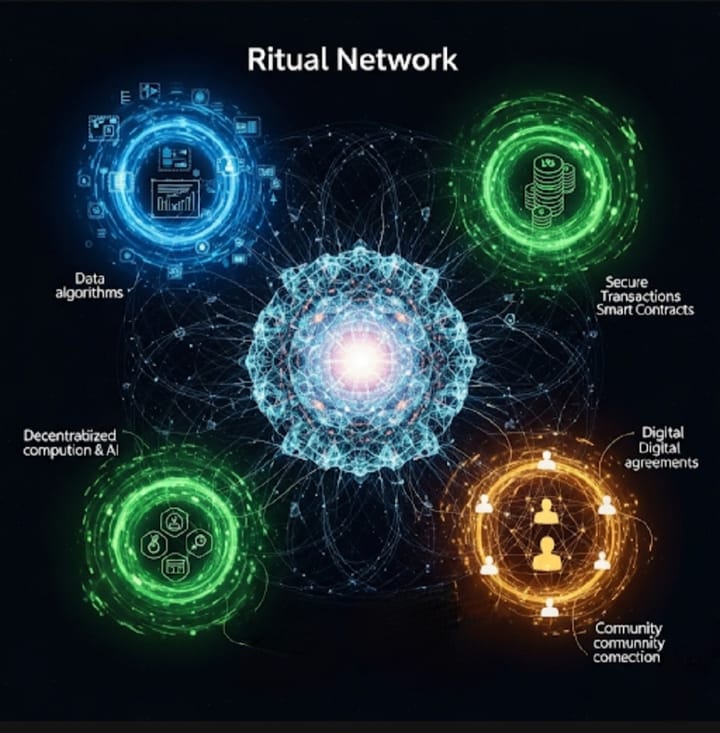ETHEREUM'S PECTRA UPGRADE: A Beginner's Guide To Big Changes

Ethereum is a top platform for apps like Defi, Nfts, and digital wallets. It just got a major upgrade called Pectra coming on May 7th, 2025. Why is this a big deal? Why should we care about this? Well, Pectra is a big upgrade that makes Ethereum faster,cheaper and easier to use, Before Pectra, Ethereum had some major limitations that made things hectic for app builders(developers), validators(people keeping the network safe) and investors (Ethereum holders), how? Let's talk about it!
Ethereum Before Pectra:
Ethereum has been at the forefront in the blockchain industry since 2015, allowing people to create apps without the need for a middleman, but this came with challenges:
For Developers:
Building apps was costly and complex, and transactions required a huge amount of gas fees, especially during busy times, developers struggle with expensive cryptography for secure apps, these issues brought about Layer 2 platforms like Arbitrum which made transactions cheaper but they didn't have enough data space to grow fast
For validators:
To help run Ethereum, validators had to lock exactly 32 ETH per slot, no more , no less. If they wanted to take more, they needed multiple slots, which meant extra computer and costs
For Investors:
High fees made Ethereum less appealing to use, and this slowed the growth. Only 30% of ETH was staked, leaving plenty available for trading, which made price volatile! Ethereum burned ETH to reduce supply, but the high fees didn't always translate to price growth. Other blockchains like Solana were faster, and investors worried that Ethereum might fall behind. The Dencun upgrade in March 2024 helped by adding "blobs" to lower Layer 2 fees, but Ethereum still needed a big leap ahead.
Pectra upgrade:
Pectra is like giving Ethereum a new and shining engine to run one. It includes 11 major updates (called EIPs) that fix old problems and make Ethereum ready for more users and user-friendly. Key changes include flexible staking (EIP-7251), easier wallet features (EIP-7702), and more data for Layer 2 (EIP-7691), while some features (like Verkle trees) are delayed until 2026, Pectra makes Ethereum better.
For Developers:
Things just became sweeter from costly to creative. Back then, developers faced high costs to build and run apps. If you used a DeFi app or bought an NFT, gas fees (paid ETH) could be as high as 10$- 100$ during peak times. Regular wallets were basic, so developers couldn't add features like paying fees with USDC or doing multiple tasks in one go.
Pectra changes:
- Easier Wallets (EIP-7702): Now, regular wallets can act "Smart" for a moment, letting developers add cool features. Imagine buying NFT and transferring it in one click or paying fees with stablecoins like USDC, making it easy for beginners.
- Cheaper security(EIP-2537): Pectra lowers the cost of complex math for secure apps, so developers can build things like private transactions without breaking the bank.
- Layer 2 space (EIP-7691): Pectra doubles the data (to 768 KB per block) for Layer 2 platforms like Optimism, keeping fees low and letting more people use apps.
For Validators:
From Rigid to Flexible
Before Pectra: Validators locked exactly 32 ETH per slot to secure Ethereum and earn rewards. Want to stake 64 ETH? You needed two slots, doubling your costs for computers and internet. Starting took hours, and withdrawing ETH was slow and risky, relying on less secure keys. Validators also needed strong setups to handle network tasks, which was tough for those with basic computers.
Pectra’s Changes:
- Flexible Staking (EIP-7251): Validators can now stake up to 2,048 ETH in one slot, cutting costs for big players and letting small stakers grow rewards automatically. The minimum is still 32 ETH, so anyone can join.
- Faster and Safer (EIP-6110, EIP-7002): Starting as a validator now takes minutes, not hours. Exiting or withdrawing ETH is quicker and uses safer methods, protecting your money.
- Less Work (EIP-7549): Pectra reduces the computer power needed, so validators with basic setups can keep up.
Validators save money and time, and lower risks (like losing ETH for errors) make staking more appealing. But if big players stake too much, it could make Ethereum less decentralized, which might worry some.
For Investors:
Before Pectra: High fees scared off new users, slowing Ethereum’s growth. Only 30% of ETH was staked, leaving lots available for trading, which could make prices swing. Burning ETH (to reduce supply) helped, but it wasn’t enough to guarantee price jumps. Competitors like Solana were faster, and investors worried Ethereum’s $238.79 billion market cap (at $1,979 per ETH in April 2025) might not grow as hoped.
Pectra’s Changes:
- More Users: Cheaper Layer 2 fees and easier wallets could bring millions to Ethereum’s apps, increasing ETH demand.
- More Staking: Flexible staking might lock up more ETH, reducing what’s available to trade and supporting prices. However, rules around staking taxes could complicate things.
- Fee Trade-Off: Low fees are great for users but mean less ETH is burned, which might slow price growth.
Pectra makes Ethereum more attractive for apps and businesses, which could lift ETH’s value. Some predict ETH could hit $7,000 by mid-2025, though U.S. ETH funds (ETFs) are seeing outflows. Watch for competition from Solana or Celestia and delayed upgrades in 2026.
Why Pectra Matters for You
Before Pectra, Ethereum was powerful but pricey and rigid. Pectra fixes these issues, making apps cheaper, staking easier, and Ethereum more competitive.
For beginners:
Developers can make apps you’ll love, like wallets that don’t need ETH for fees. Validators keep Ethereum safe, so your transactions are secure. Investors might see ETH grow as more people use Ethereum, but keep an eye on risks.
Why Pectra Matters for Mitosis:
Before Pectra, Ethereum’s high fees, basic wallets, and rigid staking made it tough for projects like Mitosis to shine.
Pectra fixes these by:
- Lowering L2 fees, making Mitosis’s cross-chain transactions cheaper.
- Simplifying wallet interactions, improving Mitosis’s user experience
- Strengthening Ethereum’s security, which Mitosis relies on via EigenLayer
- Attracting developers to build on Mitosis’s ecosystem.
- Boosting investor confidence in Ethereum and Mitosis.
What’s Next? Ethereum’s 2026 upgrade will make it even better.
Useful links • Mitosis Litepaper - Learn the vision behind Mitosis, modular rollups, and their economic design.
• Mitosis blog- Explore updates, ecosystem news, technical breakdowns, and RaaS strategies.
• Mitosis link3 profile - Quick access to mitosis socials, campaigns, and ecosystems news



Comments ()